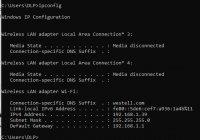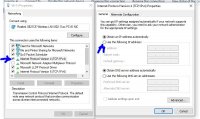OccamsRazor
Well-Known Member
Setting up a wired Intranet (connected via an 8-port hub) and I will have 1 Windows based machine and 2 Linux based CPUs.
Using the Windows machine, how can I find the IP addresses for the Linux machines? I want to do speedy file transfers between the Linux machines via an interface from the Windows machine but, I will need to know the IPs in order to speak to the Linux boxes before I can transfer files. I am guessing that I will need to open a CMD line on the Windows machine but, how can I get the IPs? Typically, I do the file transfers over WiFi but, it is SLOWWWW!!! Thinking having them all wired via a hub will speed things up.
Thanks!
Using the Windows machine, how can I find the IP addresses for the Linux machines? I want to do speedy file transfers between the Linux machines via an interface from the Windows machine but, I will need to know the IPs in order to speak to the Linux boxes before I can transfer files. I am guessing that I will need to open a CMD line on the Windows machine but, how can I get the IPs? Typically, I do the file transfers over WiFi but, it is SLOWWWW!!! Thinking having them all wired via a hub will speed things up.
Thanks!


